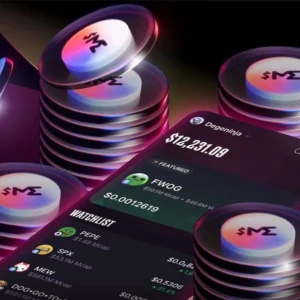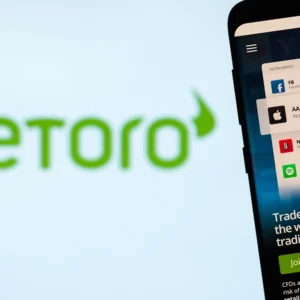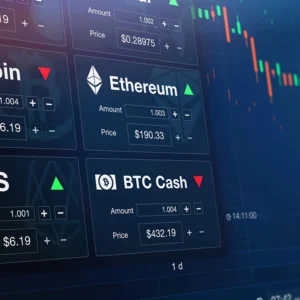One of the main characteristics of cryptocurrencies is volatility, which is the fluctuation of their value over time. This volatility allows for profit-making through exchange rate changes. However, volatile currencies are unpredictable and can enrich or bankrupt their owners. To mitigate the risk of cryptocurrency operations, Tether (USDT) was created – a stable crypto guaranteed by fiat money.
Its main feature is being backed by actual US dollars held in the accounts of the developing company. This peg to the value of a real currency eliminates volatility, allowing it to be called a stablecoin.
How Does Tether Work?
Technically, it is a cryptocurrency like the well-known Bitcoin, using the same blockchain technology for financial transactions. But there is a significant difference. Ordinary cryptocurrency has no physical representation; it “exists” on the blockchain, and its value is regulated solely by demand, with issuance controlled by software capabilities. Therefore, its value changes often, quickly, and within a wide range. Tether differs in that each coin is worth precisely 1 dollar, held in the accounts of the issuing company. The number of crypto coins depends on the availability of real funds.
How Much Is 1 USDT or 1 Tether Worth?
The cryptocurrency market is no longer the wild space it was at the beginning of its existence, and the importance of stable cryptocurrencies has dramatically increased. However, for many, especially newcomers, understanding how the value of 1 USDT is determined and what factors affect its fluctuation can take time and effort. In the case of Tether, it is much simpler than with regular cryptocurrencies. Its price depends on the reserve assets held by the issuing company. The value of issued USDT must equal the value of these reserve assets. For each USDT, there is a real dollar in the accounts. In other words, 1 USDT should be worth 1 real dollar, which is the practice case.

Can the Value of 1 USDT Change?
USDT is positioned as a stable currency that does not change in value. However, in reality, over its 10-year existence, it has not always been worth exactly one dollar. Tether’s history includes short-term drops to $0.91 and small rises to $1.1. Compared to the rapid rises and equally sharp falls often seen in the crypto world, these are minor fluctuations. Therefore, we can confidently state that it truly costs 1 dollar.
Advantages of Tether Over Other Cryptocurrencies
Several reasons contribute to the popularity of USDT:
- Low Volatility and Relatively Stable Price. This makes the currency less risky for investments and convenient for transactions.
- Blockchain Technology. Ensures ease of use, simplicity, and speed of transfers and transactions, especially in trading. Price fluctuations are minimized.
Tether has many advantages of classic cryptocurrencies:
- Decentralization and Independence. From any government or regulatory body.
- Transaction Privacy. Confidentiality of transactions.
- International Accessibility. Without any restrictions, allowing quick transfers between different countries.
- Lower Fees. Compared to traditional bank or postal transfers.
- Speed of Transaction Processing.
Tether lacks the main disadvantage of traditional cryptocurrencies – instability. This is important for those using digital currency not for investment and profit on exchanges, but as a convenient alternative to fiat money. Traders often use stablecoins as a means to preserve capital during market turbulence.
What Is Tether and How Is It Guaranteed – Video
Want to learn more about USDT, the guarantees of its stability, and the reasons for its success? Watch the suggested YouTube video on our portal:
Disadvantages of Tether
Despite being the largest stablecoin in the world, specialists note several drawbacks of Tether. The main drawback is insufficient transparency. Although the issuing company regularly shows data on its accounts, it needs to be more transparent. Doubts about whether the funds are genuinely sufficient exist, as many specialists consider the audits conducted to be limited and unconvincing. This raises concerns about the stability and reliability of the cryptocurrency. A complete and independent audit could solve the problem, but it has yet to be conducted.
The second drawback of Tether is its significant influence on the market. As the largest issuer of stablecoins, it can potentially become a source of problems. Doubts about its solvency could affect the market and cause significant price fluctuations on exchanges.

Conclusions
Tether (USDT) is extremely important for the cryptocurrency market as a stable alternative to volatile currencies. Its value is backed by actual US dollars, which allows users to make transactions more securely. Despite its popularity, this stablecoin periodically faces criticism related to the transparency of its reserves.
Nevertheless, Tether remains an essential player in the cryptocurrency market, offering stability for investors and users.
Frequently Asked Questions About Tether
Yes, Tether can be trusted. Despite reservations about the transparency of its reserves, USDT has remained stable for many years.
Tether is pegged to the US dollar by holding an equivalent amount in dollars in the issuing company’s bank accounts or securities.
Tether can be bought on most cryptocurrency exchanges or exchange platforms. They usually provide simple and detailed instructions on buying and selling.
Tether (USDT) can be used to transfer funds and as an alternative to fiat currencies.
Other stable cryptocurrencies that can be used as alternatives to Tether include USD Coin (USDC), TrueUSD (TUSD), and Dai (DAI).













